The news from Morocco is heartbreaking. As I write, there are more than 3,000 who have died, many injured and countless, homeless.
When tragedies like this happen, as in Turkey this past year, or in Bosnia almost thirty years ago, one reaction I’ve experienced from potential travelers (as someone who organizes culinary journeys) is that it is less than worthy to travel (to whatever country) and enjoy oneself.
I believe the opposite. I think this is just the time to travel and spend money and support the people and businesses of a place that has experienced great losses. Of course, it is NOT a good thing to travel the epicenter of an earthquake or, for instance, to the town in Maui destroyed by wildfires. It is important to be mindful of the locals and keep resources available for them. However, places like Morocco and Maui rely on tourist dollars, so avoiding a place because of a disaster can only worsen the situation.
In an article in the New York Times on Saturday, September 16, 2023, the very same sentiment was published:
“After Covid, the abandonment of tourists would be terrible for Marrakesh, where so many resources come from tourism,” said Mouna Anajjar, the editor in chief of I Came for Couscous, a local feature magazine. “Directly or indirectly, all the inhabitants are linked to this resource and would be terribly affected.”
At Oldways, we’ve had the wonderful luck to bring groups to Morocco. In 1994, we brought a group of almost 100 well-known chefs, food writers, cookbook authors, scientists, and broadcasters to more than a week of learning, eating, talking, visiting and then eating some more. Since then, we’ve returned with culinary travelers, to soak up the history, food, culture and experiences that make Morocco so special. Here are a few of our favorites.
Fes and it’s Medina and Souk
Fes is a magical place, complicated and beautiful, with winding paths up and down and around the Old City. To venture into the Medina (inside the walls of the Old City) and to visit its souks (markets) is to be in another time – people, animals, carts, stores, treasures, rugs, jewelry – it is truly something you’ll never forget.
Inside the Fes Medina
We wouldn’t recommend embarking on a souk excursion without a guide. The official guides are amazing. Our favorite guide Hakim is incredible, full of information, stories and he’s willing to take us almost anywhere. I recommend him to all friends traveling to Morocco. Happily, he is in Fes, not affected by the earthquake, and he says all is well in Fes, although they are still traumatized and shocked by the tragedy.
Embrace the local
You might be afraid you’ll be taken for a tourist and be overcharged, but you’ll never regret having the experience of shopping for a rug or some other special Moroccan remembrance. You’ll also not regret the pleasure of having a Moroccan rug under your feet. I experience that pleasure every day, whether I’m in my office or in my dining room at home, and they all bring great enjoyment (and memories). And if you’re really skittish about bargaining, be sure to be with a guide.
Shopping in Fes – I’m with Oldways founder Dun Gifford and cookbook author extraordinaire, Paula Wolfert, who wrote one of the first cookbooks about Moroccan food (for an American audience).
Marrakech
Marrakech is in crisis today, but tomorrow, it is a place you must go. Like Fes, it is magical. The big square, the Djemaa el Fna is like nothing else. It is a UNESCO World Heritage Site filled with restaurants, snakes and snake charmers, monkeys and their handlers, nighttime food stalls and more. They all contribute to a carnival-like atmosphere that is quite special, something not to be missed. Try the nighttime food stalls and be sure to try the snails (an uber source of heart-healthy Omega-3s).
Paula Wolfert teaching me the fine art of snails at the Djemaa el Fna .
Marrakech is called the “Red City,” because its buildings and walls were made of clay many years ago. This is part of the current tragedy, for many of these buildings have collapsed. The city is surrounded by large areas of palm groves, which have provided a glamorous place – La Palmeraie -- for the well-heeled to build houses, including designers Yves Saint Laurent and Pierre Balmain.
Hotels v Riads
In Marrakech and many other places, there are ultra-luxurious hotels to check into. The most famous in Marrakech is La Mamounia.
On their website right now, their post echos the sentiment of others – come to Morocco!
Marrakech needs to welcome you again and again to stay strong and keep shining as always !
To all our Family and Friends,
We would like to reassure you that our beloved Mamounia and all our Colleagues and their families are safe after the recent earthquake in Marrakech and surroundings.
We’re truly grateful for the outpouring of support and kind messages we’ve received.
Your words have touched our hearts and strengthened our spirits,
thank you for being with us during this challenging time.
We are focused on assisting our beloved city and our community.
“The history of La Mamounia goes back to the 18th century when the Alaouite Sultan Mohammed Ben Abdallah offered a sumptuous orchard of 13 hectares to his son as a wedding gift. The son later transformed the orchard into a leisure venue for outstanding garden parties.” Since then the hotel has been transformed, by a railroad tycoon, embraced by film stars and filming, beloved by politicians such as Winston Churchill (the bar and a suite at La Mamounia are named for him), as well as artists and designers, and by regular folks (like most of us).
While most of us can’t afford the room rates of La Mamounia, it’s well worth the time and money to stop in, just for a lunch or a cocktail or to stroll among the gardens. And not to worry, there are so many wonderful places to stay in Marrakech, and for that matter, all around Morocco.
Garden of La Mamounia
One possibility we love at Oldways is to book overnight stays in Riads throughout Morocco. Riads are traditional Moroccan houses of several stories, with an inner courtyard. Looking at the outside of a Riad you may be puzzled about what is inside – it usually looks especially unremarkable…until you step inside. Once you enter the Riad, you’ll see what the fuss is about. There are usually several floors with balconies, looking down into the central courtyard where all the action is. Think of it like the Moroccan version of the New England B&B.
Staying at a Riad is much more intimate than any hotel. The family’s residence is often part of the Riad, and by staying there, it’s a wonderful experience to get to know the family. One time we were in Fes with Chef Ana Sortun of Oleana Restaurant in Cambridge, and Ana was so startled to go into the family’s kitchen and discover a goat living in it.
In the courtyard of Riad Daar Dmana in Fes with General Manager Rachid Azami
Meknes, Wine and Volubulis
Meknes is the epicenter of olive oil and argan olive oil production in Morocco. Like all over the world, grapes grow in the same place as olives, and the vineyards around Meknes (in between the capital city Rabat and Fes) are the major production area for wine in Morocco.
Restaurants and hotels have plenty of wine to offer, and it is exciting to try wine in a new place, as we rarely see Moroccan wine in the United States. In Meknes, we visited La Case Restaurant, owned by Reda Zniber, and his family’s wine label, Celliers de Meknes. If you like wine, it is well worth taking time to visit a winery in and around Meknes.
Meknes is personally notable for other reasons. In July, I wrote about the most memorable meals of my life in my Substack newsletter, (Always) Hungry for Travel. One meal was in Meknes in 1994, at the home of Moulay Messaoud Agouzal, the largest olive oil producer in Morocco. Not everyone can host 200 for lunch. Mr. Agouzal could. As Phyllis Richman wrote in the Washington Post, “We were a hard group to impress, but he managed.”
While you are visiting Meknes, you are not far from Volubulis, a partially-reconstructed Berber-Roman city from the 3rdCentury BC. We’ve never gone to Morocco and not made a stop at Volubulis, and we recommend that you do.
Food and Cuisine
This multi-course meal naturally brings us to the food and the experience of eating in Morocco. As Phyllis Richman described it in the Washington Post, this meal at the house of Mr. Agouzal did focus on the stars of Moroccan cuisine: tagines, couscous, and spices, along with some of the fancier, famous dishes – the Bisteeya (a pigeon or chicken pie with almonds and raisins wrapped in a dough that’s like phyllo) and Mechoui, a roast lamb served as a whole baby lamb on a platter.
Like many places, the experience is equally as special as the food. Often meals are served on low tables, elaborately decorated. In a special restaurant in Marrakech, we found a pool in an inner courtyard, with scattered rose petals in and around the pool. Very romantic.
If you love food and are able to travel to Morocco, we suggest that you take a cooking class, whether you are in Fes or Meknes, Rabat, Casablanca, Marrakech or the Essaouira on the coast. You will also be tempted to buy the conical Moroccan tagine (a tagine is both a (food) dish and a (pottery) dish). The (food) dish is actually named for the (pottery) dish, and is a slow-cooked savory stew made with meat, poultry, or fish, and cooked with vegetables, aromatic spices, dried fruit, and nuts. Buy the tagine, and also some plates or bowls to go with it.
To experience it yourself without traveling to Morocco, Oldways has two tagine recipes on our website that are easy to try: Chicken and Chickpea Tagine with Apricots or Moroccan Tagine with Prunes. One wonderful aspect of tagines is the combination
Couscous
The title of Paula Wolfert’s book about Moroccan food, when originally published, was Couscous and Other Good Food from Morocco. This tells you how important couscous is. Paula is famous for giving demonstrations of hand-rolled couscous, and she even has a recipe on her website. As she writes, “ I don't know why it took me so long to start teaching homemade couscous. Once I did, putting on a show costumed in my printed blue and white pantaloons and sitting on the floor the way North African women do, I remembered how much fun it was and how astonishing the results. Now, spurred on by terrific feedback from my students, I demonstrate couscous making whenever I get the chance.”
Couscous is a traditional North African dish of semolina wheat (durum wheat granules) which is cooked by steaming. It’s not a grain, but rather a pasta. It is called a whole grain when the wheat used is a whole grain. It’s incredibly versatile – can be served hot or cold – by itself or with vegetables, spices, tubers, nuts, whatever you wish. Like pasta, it is a canvas for whatever you’d like to mix with it.
You can roll your own, Paula Wolfert-style, or buy it in the grocery store. Whatever you decide to do, it is a satisfying dish with its roots in North Africa. Here are two couscous recipes from the Oldways website: Moroccan Couscous or Couscous Salad.
And more.
There are so many other places to explore – the Atlas Mountains where the earthquake was centered, Essaouira, a charming seaside town where you can easily explore and enjoy amazing seafood right on the dock, Rabat, the capital city, and Casablanca, the largest city with plenty of museums and restaurants and nightlife.
Whatever you decide, don’t forget Morocco. They need our tourism dollars, and if you don’t go, you’ll be missing a very special and perhaps exotic experience, stunning handicrafts, delicious food and more.
Other ways to help
If you can’t travel to Morocco, there are other ways to contribute.
Donate to Doctors Without Borders or UNICEF.

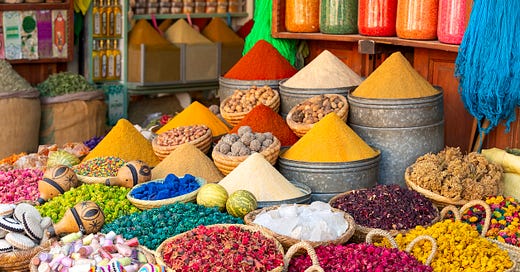



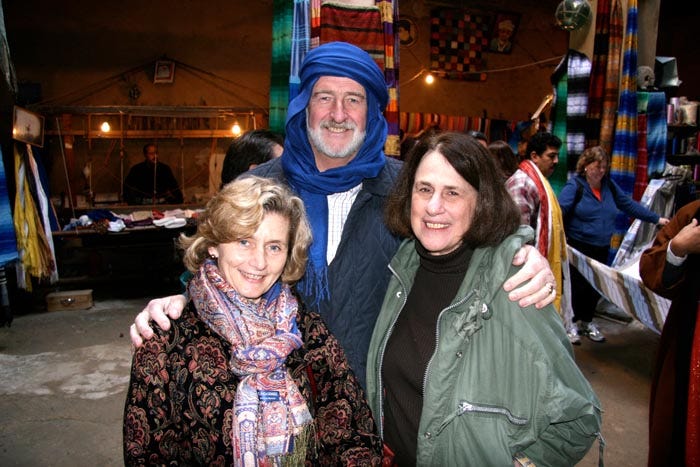
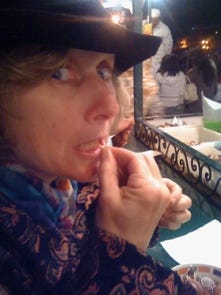
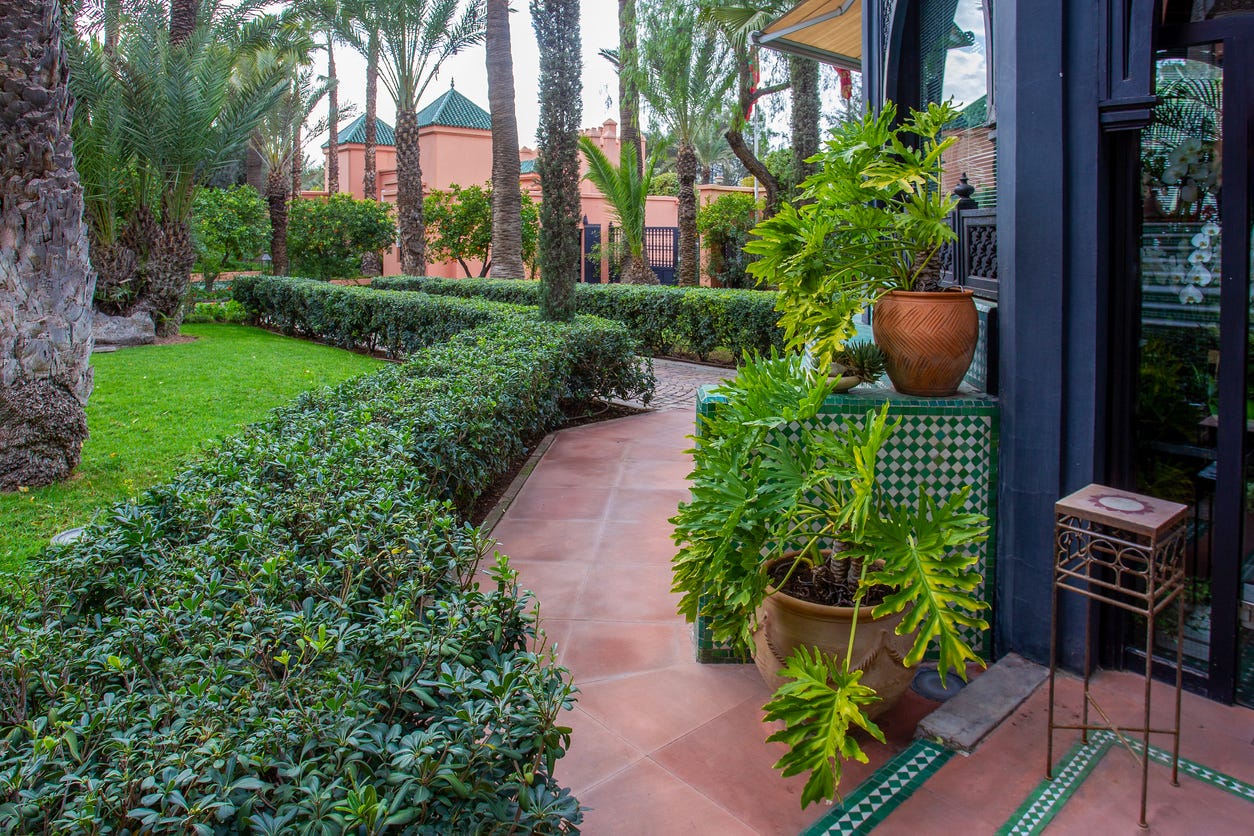

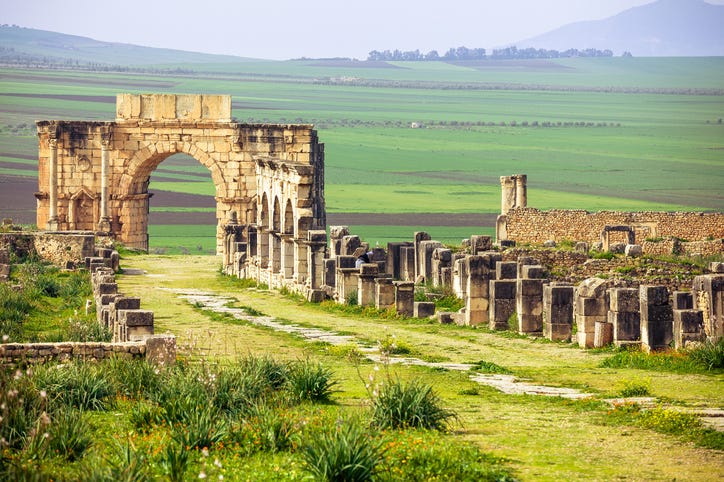

Sara,
Morocco was one of our favorite trips. We loved it! Food was great and meeting Paula was a great perk. We even visited her in California with our daughters who are also foodies. I remember seeing the goat in the kitchen, it was so cute.
I would go back in a heartbeat. Rod and I believe we should travel while we still can (we're old) and yes, visiting helps the locals. Living with the aftermath of Maui, they need visitors to help the economy. We have a friend who is a chef who trained with Ming Tsai and moved back to Maui. He lost his home and the restaurant he was chef at. Despite all he works every day cooking and helping to feed others. At least all his family is safe and well.
We say, travel, explore different cultures and get to know the locals. It enriches your life! Looking forward to traveling next year. Ardi & Rod
Great piece, all the more reason to travel to the places we love that need our support, investment and tourism.